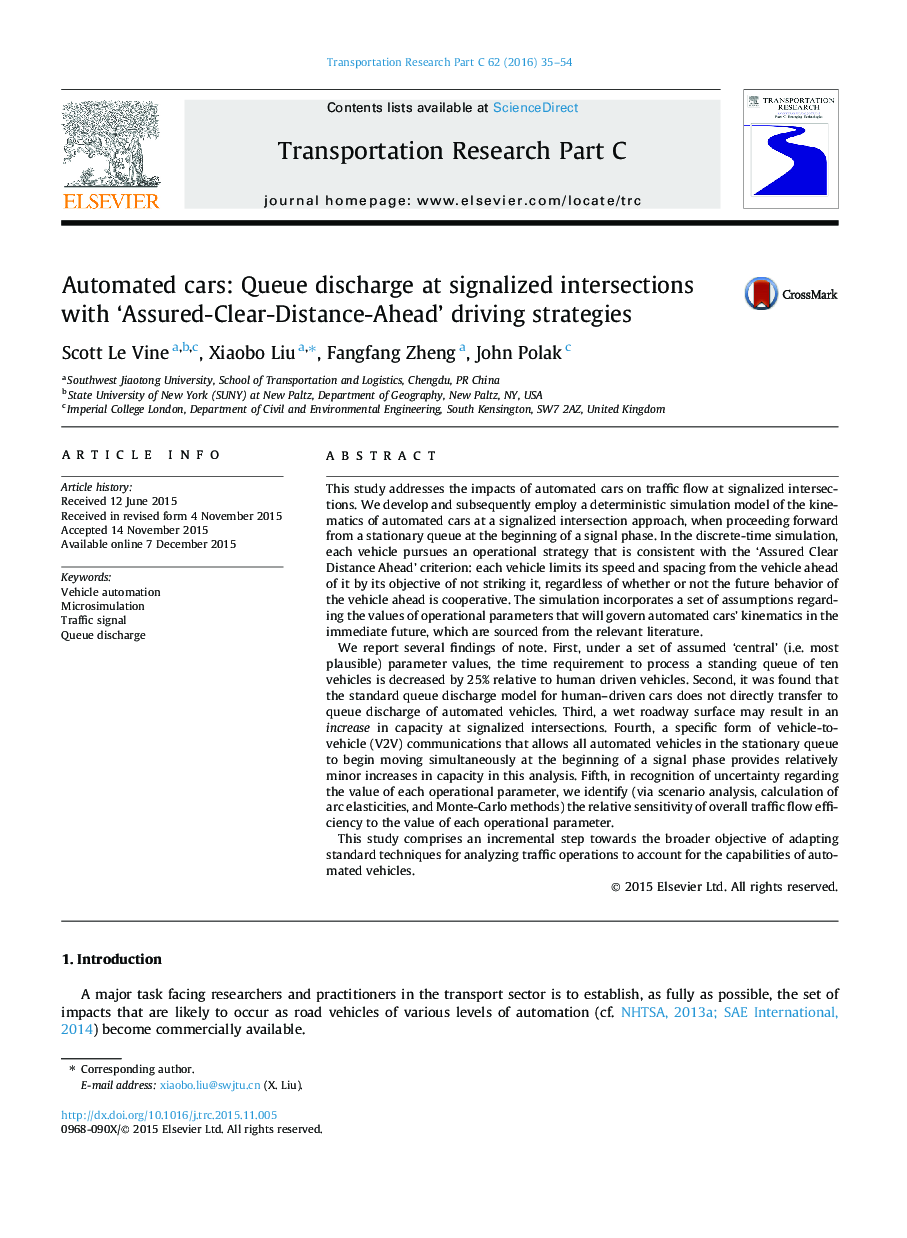| Article ID | Journal | Published Year | Pages | File Type |
|---|---|---|---|---|
| 524843 | Transportation Research Part C: Emerging Technologies | 2016 | 20 Pages |
•A new deterministic model of automated cars’ discharge at signalized intersections.•Capacity is compared to the Highway Capacity Manual’s model of human drivers.•The HCM’s human–driver model does not directly transfer to autonomous cars.•Baseline scenario: 25% decrease in time required to process a 10-car queue.•A wet roadway surface may lead to increased capacity relative to a dry surface.
This study addresses the impacts of automated cars on traffic flow at signalized intersections. We develop and subsequently employ a deterministic simulation model of the kinematics of automated cars at a signalized intersection approach, when proceeding forward from a stationary queue at the beginning of a signal phase. In the discrete-time simulation, each vehicle pursues an operational strategy that is consistent with the ‘Assured Clear Distance Ahead’ criterion: each vehicle limits its speed and spacing from the vehicle ahead of it by its objective of not striking it, regardless of whether or not the future behavior of the vehicle ahead is cooperative. The simulation incorporates a set of assumptions regarding the values of operational parameters that will govern automated cars’ kinematics in the immediate future, which are sourced from the relevant literature.We report several findings of note. First, under a set of assumed ‘central’ (i.e. most plausible) parameter values, the time requirement to process a standing queue of ten vehicles is decreased by 25% relative to human driven vehicles. Second, it was found that the standard queue discharge model for human–driven cars does not directly transfer to queue discharge of automated vehicles. Third, a wet roadway surface may result in an increase in capacity at signalized intersections. Fourth, a specific form of vehicle-to-vehicle (V2V) communications that allows all automated vehicles in the stationary queue to begin moving simultaneously at the beginning of a signal phase provides relatively minor increases in capacity in this analysis. Fifth, in recognition of uncertainty regarding the value of each operational parameter, we identify (via scenario analysis, calculation of arc elasticities, and Monte-Carlo methods) the relative sensitivity of overall traffic flow efficiency to the value of each operational parameter.This study comprises an incremental step towards the broader objective of adapting standard techniques for analyzing traffic operations to account for the capabilities of automated vehicles.
